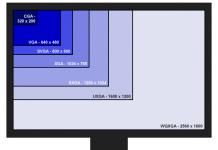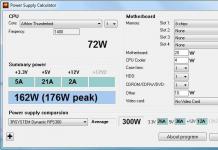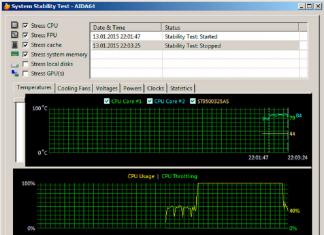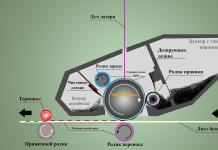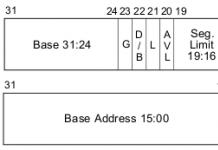When choosing a monitor for work in the office or for home use, one cannot help but pay attention to such a critical moment as the diagonal. Monitor resolution, manufacturer and other characteristics, of course, are no less important, but in this article we will build on this indicator.
The computer market, without exaggeration, is oversaturated with displays of various types and sizes. Therefore, it is sometimes very difficult for an ordinary user to make the right and balanced choice. Let's try to figure out how the screen size of the monitor affects the rest of the characteristics of the device, and discuss which models are better to pay attention to.
What are we looking for?
To begin with, consider the state of affairs in the modern computer market. Very often, when choosing this kind of device, the question of where exactly the monitor will be used (what diagonal we need - more on that below) does not arise with an edge. In the understanding of most users, a good device simply must be universal: you can work with it around the clock, play until late at night, comfortably surf the Internet, and watch your favorite TV shows and movies.
These desires are quite understandable, but then why on the market, instead of several universal monitors, we see a whole bunch of devices that differ from each other, well, quite a bit? The answer is quite simple - to increase sales. Agree that you will choose devices and the same diagonal monitors from a manufacturer that represents its brand with dozens of models, and not from a company whose assortment is limited to three devices, even if they are very good ones. In addition, almost any more or less significant brand is not averse to creating the illusion of choice for its future consumer.

But among all this variety, there is definitely that device and that diagonal of the monitor screen, which is considered the best in its segment. We will talk about exactly how to find them among all this heap in this article. It’s worth mentioning right away that the diagonal of the monitor is measured in inches. Some manufacturers, for some of their own, not fully understood reasons, try to measure sizes in feet, centimeters, or something else, but the international computer market stands unwaveringly on inches, as well as our article.
Monitor diagonals
The screen diagonal is one of the critical characteristics that helps to distinguish one device from another and significantly affects the price tag. In principle, you can determine the diagonal of the monitor screen by eye. Judging by the reviews of most owners, 18.5-inch devices are considered small devices, ordinary - 19-21.5", large - 23-24", huge - 27", well, more than 30" - this is something from the area " Wow!"
Diagonal monitors (dimensions)
Let's try to somehow systematize these general data into a more or less attractive picture, where everyone can choose their own best option. We are talking about ordinary monitors that you can buy in a store, that is, they do not claim to perform any specific or super-complex tasks.
18.5-20 inches
This niche can be called budget or office. Due to the low cost, this kind of equipment is sold like hot cakes in organizations, as well as to buyers who, for some of their own, fundamental reasons, prefer small diagonal monitors (a child will do this, I just look at the photo on it, etc.) or are simply limited in resources.
21.5-24 inches
Judging by bare statistics, about a little more than half of all monitors bought this year are in this category. Of course, all creators of games, websites, videos and other content for a personal computer know about this, so most developers test their products before release on this particular group. The universal type of device in this case is an IPS / * VA monitor (diagonal 24 ").
27 inches
This is a fairly promising segment with its own nuances. If you buy an inexpensive model with such a diagonal, then at a standard working distance, which is about 70 cm from the eyes, you can see individual pixels in the image, and the overall picture will seem a bit rough. Therefore, if you are limited in funds, it is better to take a more intelligent matrix, but with a smaller size, that is, a high-quality IPS monitor (diagonal 17-24 ").
30 inches or more
This is for the most part an exclusive niche with very biting prices. The maximum diagonal of the monitor in this segment was seen in the device "Sharp" - 43 inches. Devices with such dimensions are not popular, and they cannot be called mass consumption products due to their high cost and large width. That is, the opposite edges of the monitor are out of the user's field of vision, and in order to cover the entire usable area of the device, he has to rotate his head.
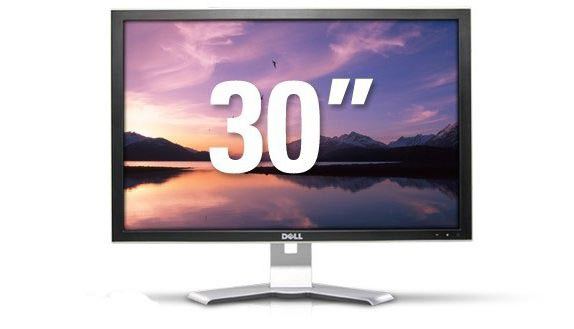
Monitors are even rarer, you can even say systems where several devices are installed. They have their undeniable advantages (for example, excellent realism in games), but for the correct operation of such a far from cheap set, you just need a monster, not a computer. High technologies do not stand still, and virtual glasses and other devices come to replace such systems, allowing you to immerse yourself in virtual reality as much as possible. But nevertheless, they are not able to displace ordinary monitors (at least for now).



